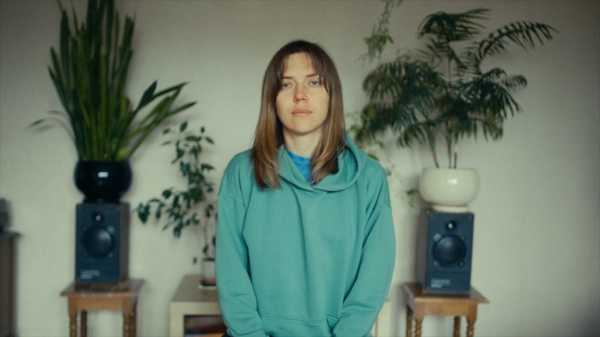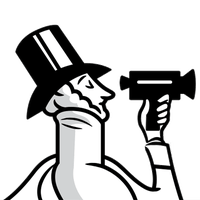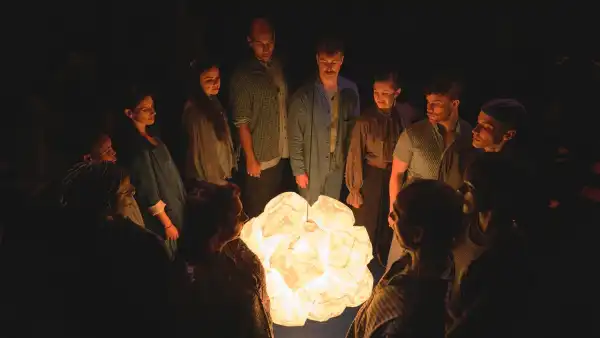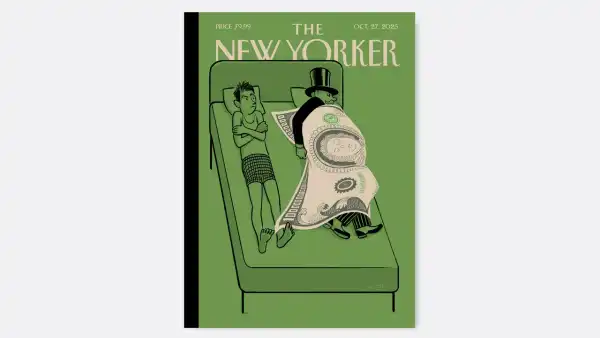
After Russia invaded, The New Yorker reached out to Nadia Parfan, beginning a yearlong collaboration documenting the reality of the war in Ukraine.
“Everywhere on my way, I saw tired women with kids,” Nadia Parfan says, in her documentary “I Did Not Want to Make a War Film.” “Their eyes could not hide it. They have been through hell.” In the film, the first of a three-part series of documentaries produced by The New Yorker and independent filmmakers in Ukraine, Parfan chronicles her own odyssey, a return to her native Ukraine just a few weeks into the Russian invasion. During her travels, she passed crowds of people in airports and bus depots and border crossings: “All of them were headed west,” she says. “I was the only one who went the opposite direction: home.”
Before the war, Parfan and her husband, Ilya, lived in Kyiv but would typically escape the city’s dark, cold months by wintering in Dahab, Egypt, a small resort town on the Red Sea. It was there, last February, that they watched troops storm into their country. “You feel like you don’t have any will, any power,” Parfan told me, about being away. “You just feel very helpless.” She described keeping herself busy by coördinating logistics for evacuations from afar—“the entire Ukraine was like one chat, in WhatsApp”—but feeling no relief. As she puts it in the film, “Dahab was safe, but it felt like prison.”
“They often say, these neuroscientists,” Parfan told me, “that it takes twenty-one days to develop a habit.” Twenty-one days into Russia’s invasion, she had her first real night of sleep in weeks, and dreamed about a road leading “to some new place.” Suddenly, she recognized it: Ukraine at war. Then she came to accept it. “Strangely, I felt relieved,” she says in the film, “as if some outer force was giving me a hint, and pulling me out of my paralysis.” The next morning, she resolved that she would travel back to Ukraine and film her journey and repatriation. “Just having the idea was so refreshing, just having any idea of what to do,” she told me.
The New Yorker Documentary
View the latest or submit your own film.

She and Ilya decided she would go and he would stay, so she travelled alone, first to Austria, then to the Czech Republic, then to Poland and the border. On her way to Kyiv, she stopped in her home town of Ivano-Frankivsk, in western Ukraine, to visit a cousin, Bogdan. His wife and kids, like Parfan’s parents, had evacuated. The film shows how, after an air-raid siren one night, he and Parfan enter a bomb shelter under the house—the one in which Parfan herself grew up. Later, Bogdan pulls black leather straps over the shoulders of his white sweatshirt, and at first it looks like he’s wearing suspenders. Then he lifts his kind face and wide eyes and fits a black handgun into a holster next to his left lung. Behind him, two small stuffed bears, wearing dresses, stand propped atop a tufted couch, holding hands. He jokes about “playing an American cop.” “The most peaceful guy on earth,” Parfan says in the film. “He got himself a gun.” All around, life is both as it was before and horribly new, suddenly militarized.
Parfan’s grandmother had also stayed behind in Ivano-Frankivsk, which was shelled by Russian missile strikes on the very first day of the invasion. She “takes her own safety measures,” Parfan says, by keeping on her a list of every family member, alive or dead, so as to better remind herself of everyone to keep in her prayers. Her home is filled, host to four groups of family friends who’ve fled the front lines in eastern and central Ukraine.
Finally back in Kyiv, Parfan finds her apartment undamaged. Her and Ilya’s potted tamarind tree, tall and delicate, is O.K. in parts, withered in others. She films herself dancing alone in the city, singing the city’s anthem: “Impossible not to love you, my Kyiv.” But any exhilaration of relief at having returned is soon entwined with her homeland’s new realities. A friend asks Parfan to check in on her house in Bucha, a suburb of Kyiv, after Russian forces retreated from a monthlong occupation. Parfan says her friend managed to escape, but not before hiding in a basement for two weeks from the massacres above ground, which claimed at least four hundred Ukrainian lives. Her friend’s place is riddled with bullet holes and shattered glass. Outside, a woman in a full-length coat, its soft blue blackened with soot, cooks over an open fire. The buildings are still without electricity or gas. Parfan asks, “What was happening here in the past few weeks?” The woman closes her mouth and stares. Nearby, in a hole big enough to be a grave, there’s a single upturned sneaker.
“What art, what film can you make when your home is bombed, when somebody is raped and tortured?” Parfan asked me. But it was where she found relief. She described the camera as “a therapist,” something that “helps build some distance” between the scenes in front and the person behind. She said she can’t be a soldier, can’t be a paramedic. She’s a filmmaker, and filming “helped release a lot of pain,” she told me. “It’s the only thing I can do, so I should do it.”
Sourse: newyorker.com






